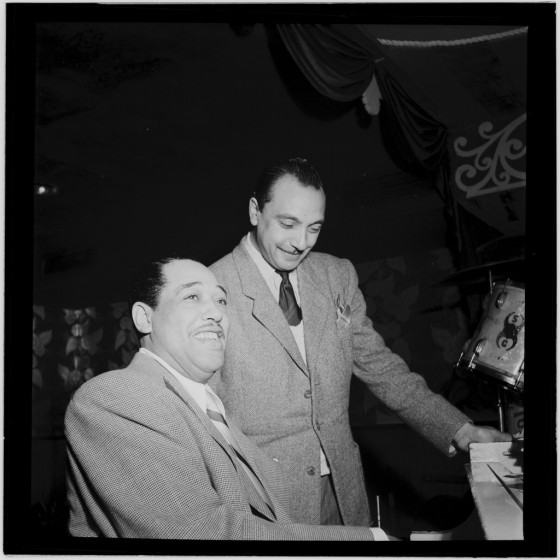Music: Duke Ellington
Jazz entered the popular consciousness in the 1920s, an untamed and spontaneous explosion. By the 1950s, it returned to its experimental roots, featuring artists such as Charlie Parker (Great American Things, July 19, 2010) and John Coltrane (January 16, 2010). During the three decades in between, jazz belonged to one man. The Duke.
The music of Ellington’s orchestra bridged the gap between black and white audiences. As the house band at the famous Cotton Club, Ellington’s ensemble reached out not just to white Americans, but to foreign audiences as well. Then when swing music started to dominate, and big bands were all the rage, Ellington adapted again and became one of the leading orchestras of the 1940s.
The Duke’s signature songs include:
- “Mood Indigo” (1931)
- “It Don’t Mean a Thing (If It Ain’t Got That Swing)” (1932)
- “Sophisticated Lady” (1933)
- “(In My) Solitude” (1934)
- “In a Sentimental Mood” (1935)
- “Caravan” (1937)
- “I Let a Song Go Out of My Heart” (1938)
- “Take the A Train” (1941)
- “I Got It Bad and That Ain’t Good” (1941)
- “Don’t Get Around Much Anymore” (1943)
- “I’m Beginning to See the Light” (1945)
- “Satin Doll” (1953)
Ellington was a masterful pianist, a charismatic leader who kept his band together (when many others disintegrated), and one of the outstanding musical arrangers of the twentieth century. Nine of his recordings are in the Grammy Hall of Fame, and he received the Presidential Medal of Freedom in 1969.
http://www.youtube.com/watch?v=GohBkHaHap8&feature=related


